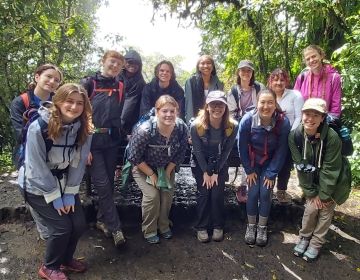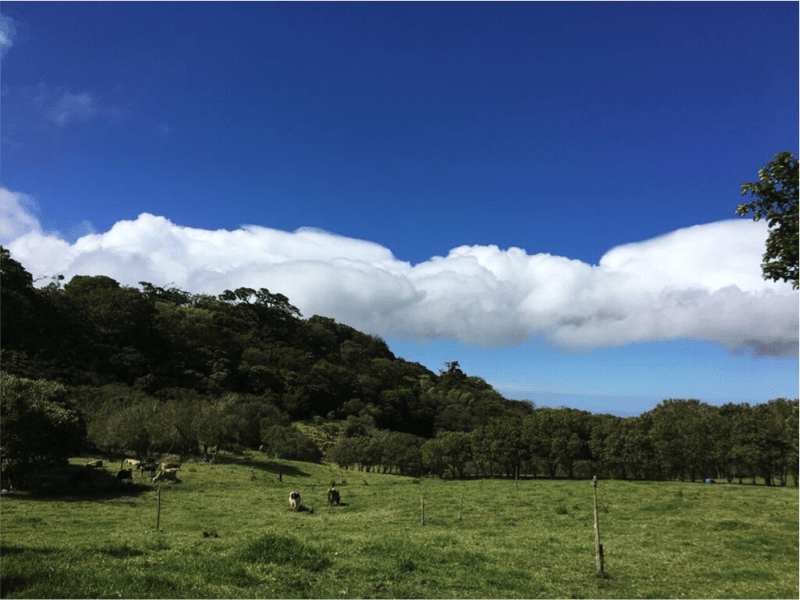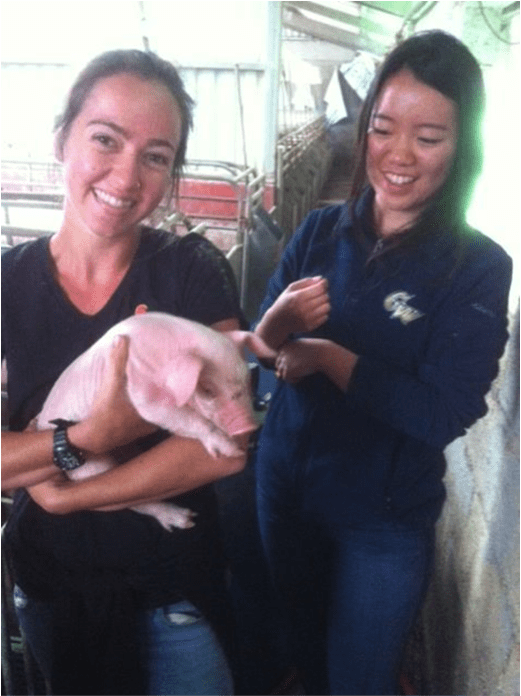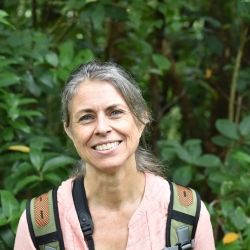"Creating an Inventory of Greenhouse Gas Emissions from Livestock in Monteverde, Costa Rica", by Erin Carroll (Washington University in St. Louis): Sustainability and the Environment Internship
Over the past month, I have been working with representatives of the Monteverde Commission for Resilience to Climate Change (CORCLIMA, by its Spanish acronym) to create an inventory of the net greenhouse gas emissions of nine livestock farms in the Monteverde district, and to use this farm-level data to encourage local farmers to adopt locally appropriate emissions mitigation strategies. Through the completion of these projects, the primary goal of the internship was to inform, involve and engage members of the agricultural sector in CORCLIMA’s grassroots effort to create a carbon-neutral Monteverde.
What initially drew me to the internship was my interdisciplinary interest in food systems studies. The opportunity to observe, research and recommend agroecological practices at the farm-level for climate-smart agriculture while simultaneously navigating overlapping local, national and international political frameworks for climate change mitigation in the sector was invaluable to my goal of pursuing a career the intersection of agricultural and environmental policy. Additionally, having grown up on a farm myself, I was personally very interested in the opportunity to spend time on nine different farms and to experience the range of management strategies, conceptual approaches to farming, and relationships with their land.
To accomplish this internship, I first familiarized myself with the IPCC methodology for conducting a GHG inventory, and the ways in which we could adapt it to a district’s agricultural sector. I also familiarized myself with the sector itself through meetings with farmers and the local office of the Ministry of Agriculture. After creating a survey to gather all of the necessary data, I visited nine farms and completed an interview at each. I then created an Excel spreadsheet to manage the raw data and perform the calculations, which gave the total emissions of GHGs in Mg CO2eq per year for each farm, and in total. Finally, my partner May and I presented our results and mitigation research in an oral presentation and personalized reports for CORCLIMA and for each individual farmer.
In just four short weeks I gained experience designing a survey and conducting interviews in Spanish, managing data and performing calculations in Excel, and communicating with many different stakeholders in a local food system – national bureaucrats, local community members and conservationists, and the farmers themselves. I also significantly expanded my knowledge of the contribution of the agricultural sector to net anthropological greenhouse gas emissions and of existing grassroots, national and international frameworks and programs for mitigation, and gained the ability to calculate the net emissions from livestock of individual farms and communities.
In addition to the successful application of IPCC methodology, which is intended for use at the national level, at the district level, I am extremely satisfied by the connections that were formed through this project between CORCLIMA and the agricultural sector in Monteverde, which will enable and empower a sector-wide and community-supported movement toward climate-smart agricultural practices in the future.
Related Posts

Happy Earth Day: Today and Every Day
Happy Earth Day! Every April 22, this global event comes around to remind us how precious our planet is, what sustainable efforts we can make to protect Earth, and that... keep reading

Costa Rica vs. Argentina: Which is Better for Study Abroad?
Imagine yourself sipping mate in a bustling Buenos Aires café or lounging peacefully in a hammock overlooking Costa Rica's lush rainforests. These contrasting scenes represent just a glimpse of the... keep reading

Top 10 Study Abroad Volunteer Opportunities with CIEE
Have you ever wondered if you could volunteer abroad? Perhaps you're looking into study abroad programs that provide international volunteer opportunities. If you’re itching to study abroad and truly make... keep reading


